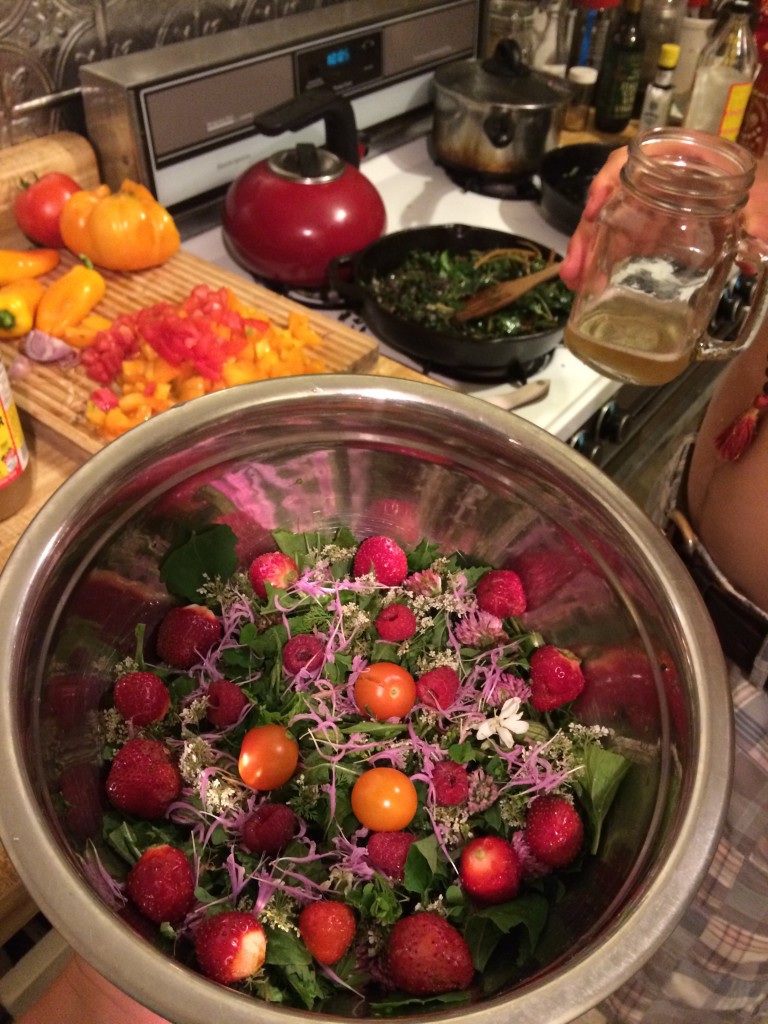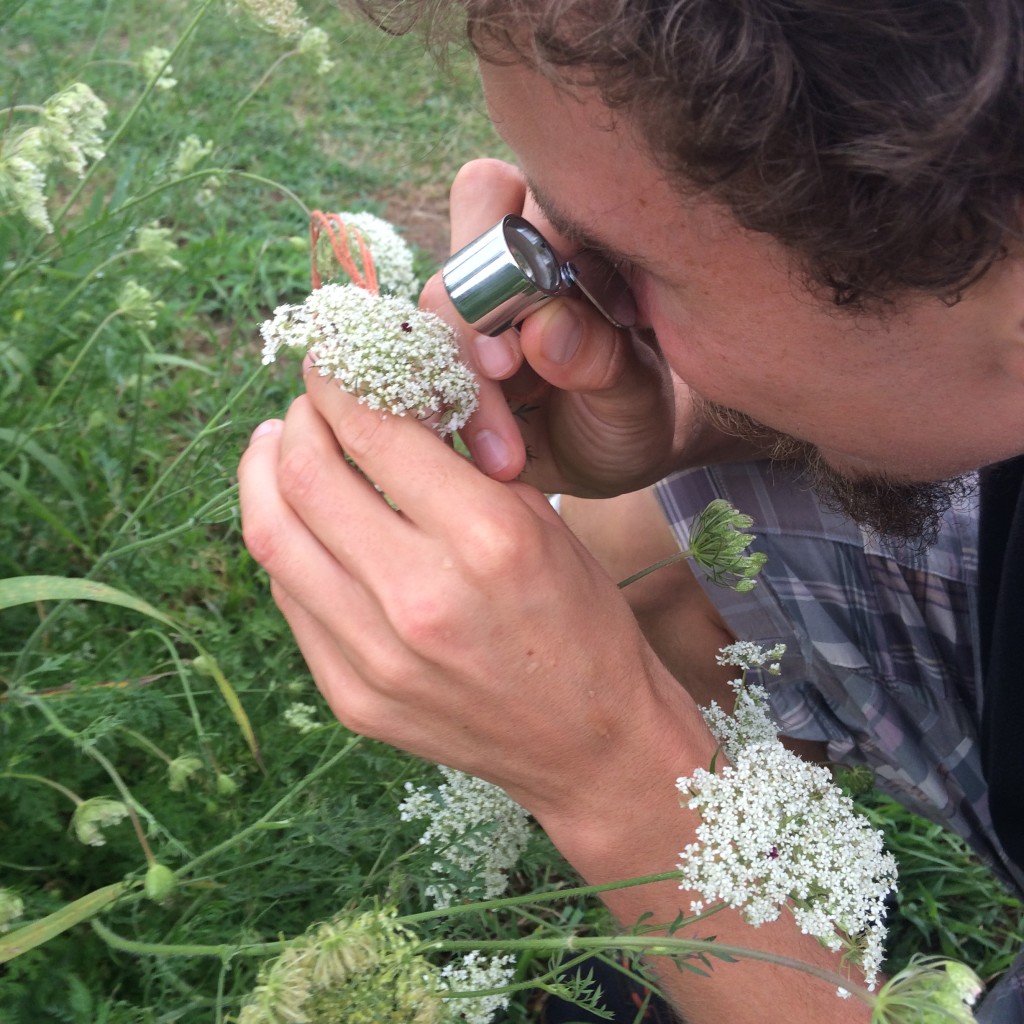
One of the benefits of studying ethnobotany and foraging is that wherever I go, I can hang out with my plant friends. Fortunately for me, I have some human friends too. Immediately following the Green Scene, I made my way north on the way to Montreal for a best friend’s bachelor party (where we read good books, played bridge, and nothing of note happened).
Fortunately, I had bought some of Doug Elliott’s CDs to keep me company on the road trip. I had bought “Groundhog-ology” for my mom, as she and my dad are no strangers to groundhogs. One summer when I was a kid, I made it my duty to catch the groundhogs on our 2 acres in Connecticut. Summer ended after 12 trips with the Have-A-Heart trap to a cemetery a few miles up the road, including one loaded with a pair of younger groundhogs, bringing the catch-and-release count to 13. It is said that the cemetery groundskeeper curses the Stebbins name to this day…Needless to say, we were in need of some education on the history and lore around the Groundhog, and Doug’s CD didn’t disappoint. I had also bought “Sail on Honeybee” for my friend Audrey Swanenberg, who’s place I stopped at outside of Baltimore on the way back to Connecticut and who has dabbled in beekeeping the past few years. This CD was equal parts educating and entertaining, and the perfect way to sail on north.
Audrey and I spent our junior years at university on a trip called International Honors Program: Rethinking Globalization. She has settled near her alma mater of Johns Hopkins and has fully ingrained herself within the burgeoning food scene there. Audrey is the “General Manager of Awesome” at Chesapeake Farm to Table, an online ordering system connecting farmers to restaurants. Concurrently, she is co-managing 3-acres of vegetables, herbs and flowers, selling through their CSA (Community Supported Agriculture), florist sales, and Chesapeake Farm to Table.
I visited Audrey on my way to Wyoming last year and Chesapeake Farm to Table has grown quite a bit since then. This promising trend reflects a greater demand for local, high quality food. Audrey and I discussed the economic difficulties and frustrations in getting higher quality food to folks with less expendable income. Though her and her fellow farmers do their part and donate a portion of their produce to food pantries, unequal food access is a systemic problem that will require shifts beyond the scope of this blog post. We also discussed the role of growing herbs and medicinal plants in local agriculture, and I found it interesting that purslane (Portulaca oleracea) was making it into the high-end restaurant scene. I can only hope that more people begin to realize how readily medicinal foods like Portulaca and Taraxacum officinale (dandelion) are available in any bare soil and incorporate them into mainstream food systems (looking at you, Audrey)!
After the bachelor party in Montreal, which included my first run in with purple-flowered raspberry fruits (Rubus odoratus) and a trip to the Montreal Bio-dome, I visited the Poughkeepsie Farm Project, where my friend and co-Cornellian Ellie Limpert works (plays) as the Education Manager. The Poughkeepsie Farm Project is a food justice program located on 12 acres of Vassar College’s land. Its CSA serves nearly 500 members, and classes are taught about healthy eating and food production year-round. Needless to say, CSA pickup when I arrived was quite the social gathering.
As Ellie gave me a tour of the farm and introduced me to her co-workers and friends, I began introducing her to the non-crop plants on the farm. Taraxacum officinale (dandelion), Daucus carota (Queen Anne’s Lace), Polygonum spp. (Lady’s thumbprint), Silene vulgaris (Bladder Campion), Chenopodium album (Lamb’s Quarters), Galinsoga ciliata (Quickweed), Rumex sp. (Yellow dock), Trifolium pratense (Red clover), Amaranthus sp. (Pigweed), and Viola sp. (Violet) leaves all joined our harvesting buckets as we perusued nature’s grocery store. It was encouraging to see so much food growing between the food crops, knowing that with a bit of little extra information, farmers could transform countless hours of weeding into hours of harvesting these easy to grow, highly nutritious plants.
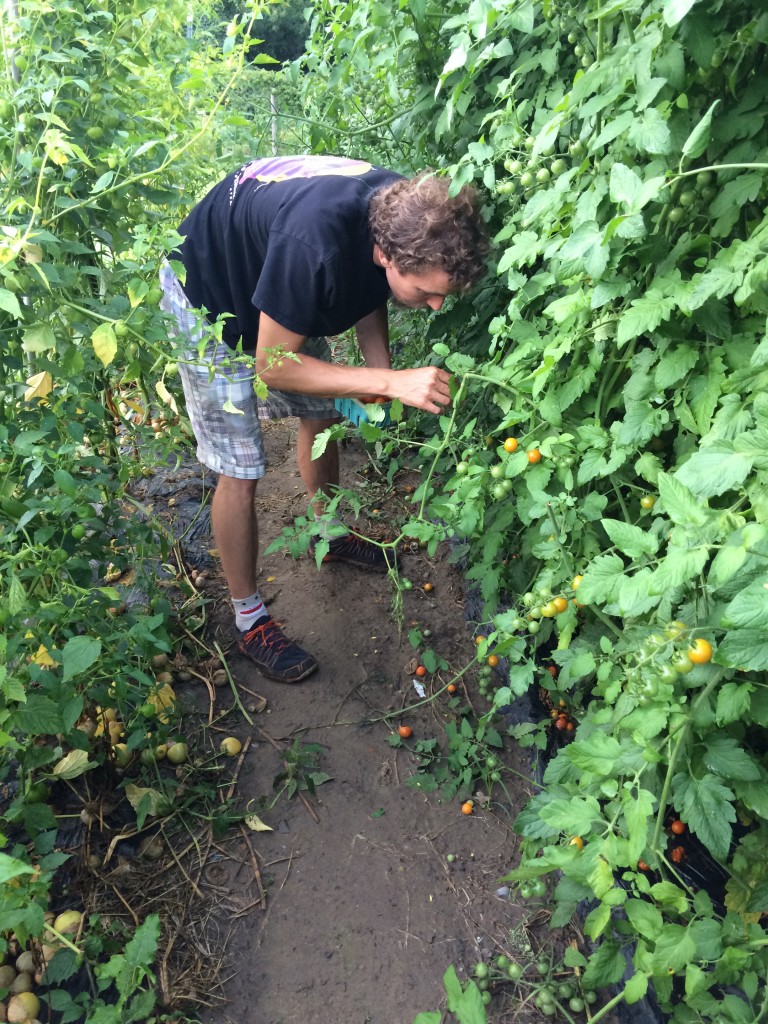
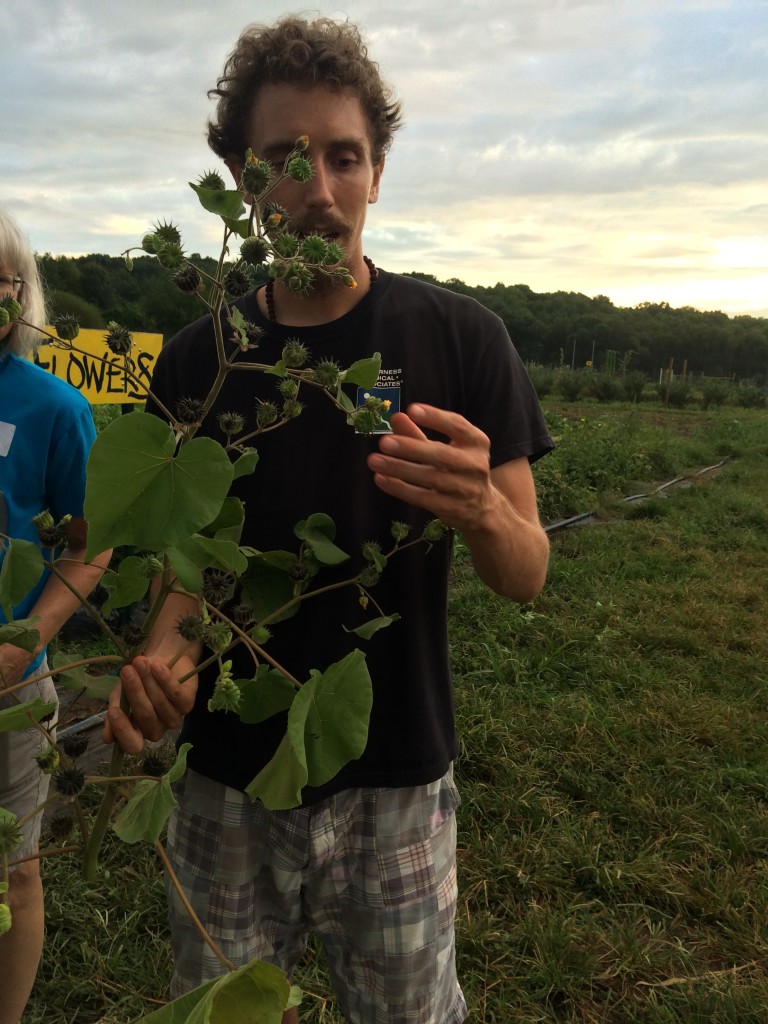
After harvesting our plant friends, plus some eggplant, tomatoes, raspberries, and strawberries, we took a quick walk through the Vassar Ecological Preserve behind the farm. There, we found some Monarda sp. (Bee Balm) and Lindera benzoin (Spicebush) to make a tea. Then came a simple meal including a stir-fry and salad of the aforementioned plants, and a dish of eggplant, tomatoes, and Swiss chard cooked in apple cider vinegar and nutritional yeast. A quick dressing of olive oil, miso, tahini and apple cider vinegar rounded out the meal. It was a fittingly satiating meal to top off an unexpectedly bountiful day.
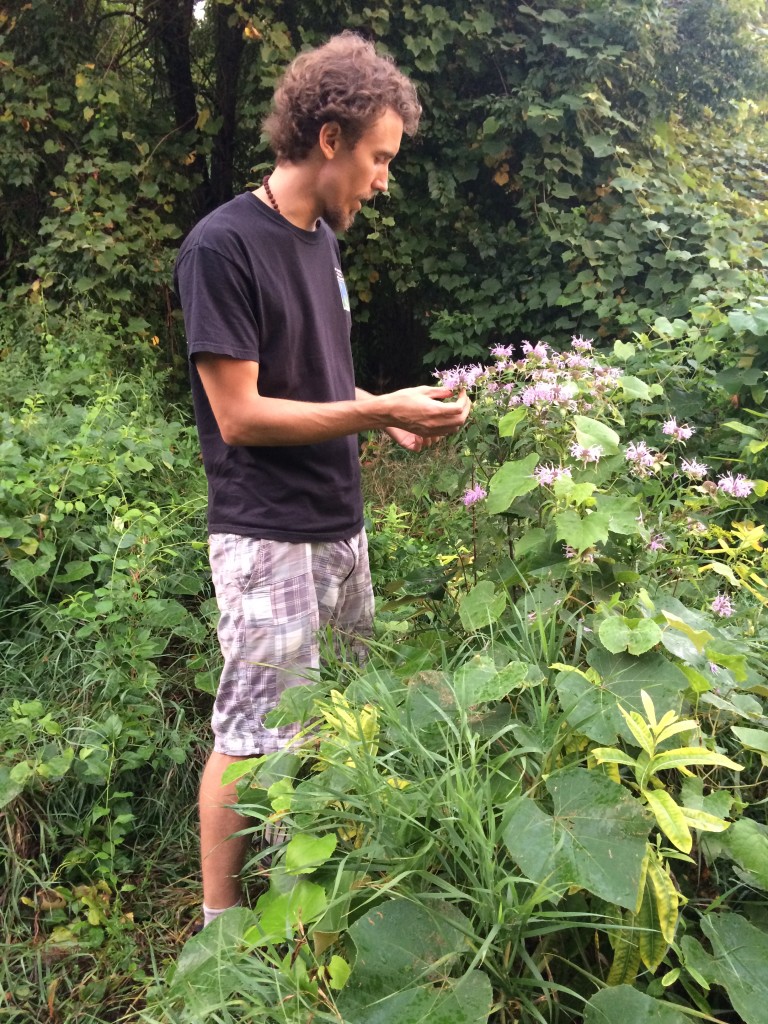
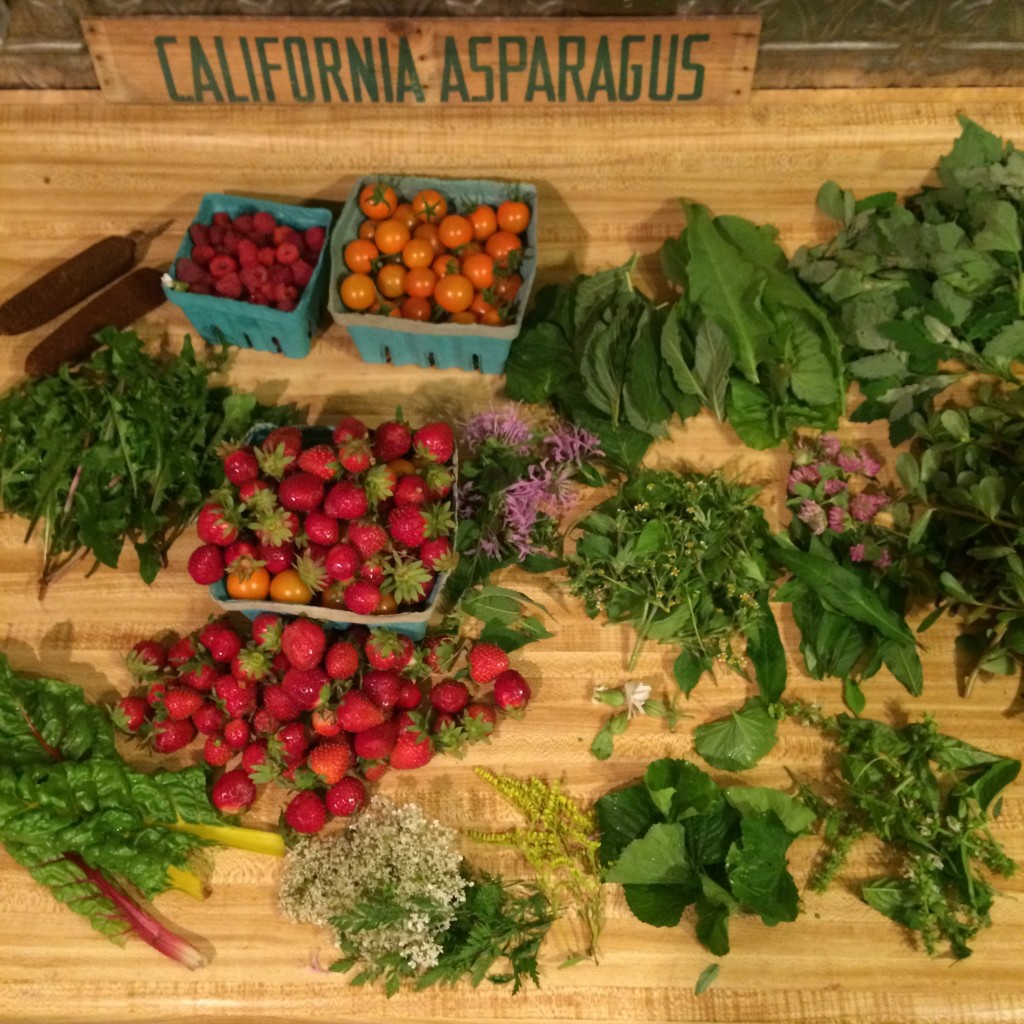
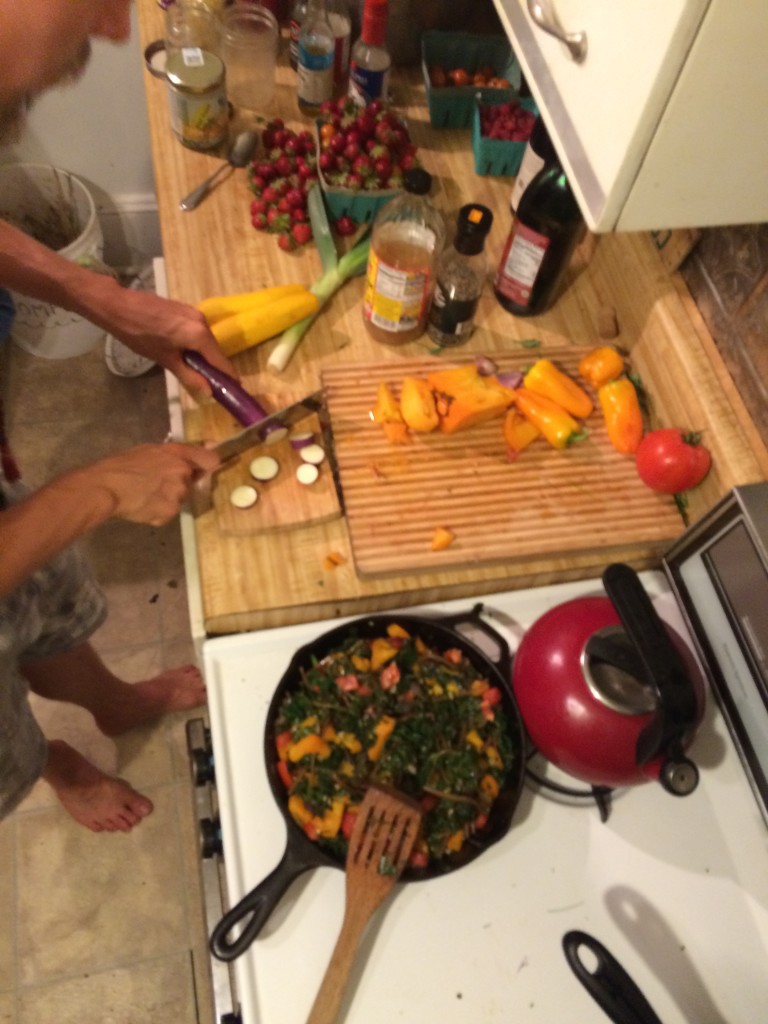
The following day, I returned to the farm to compile a plant list for the farm. The count now stands at 58 plants outside of cultivation, a number that will certainly grow with more visits at different times of year (and as I get to know grass species). Hopefully, this list can form the basis of a diversification of foods harvested from the farm and perhaps a new branch of botanical education at the farm.
I was glad for the opportunity to turn a bachelor party into a botanical and agricultural journey. The beauty of botany is that it can be practiced nearly anywhere. Sprinkle in a few good friends and the practice of ethnobotany becomes almost like magic, turning a green wall to a mosaic of beautiful individuals and weeds to gourmet meals. I look forward to many opportunities to come to spread this practice to all who are open to it!
By Hayden Stebbins
